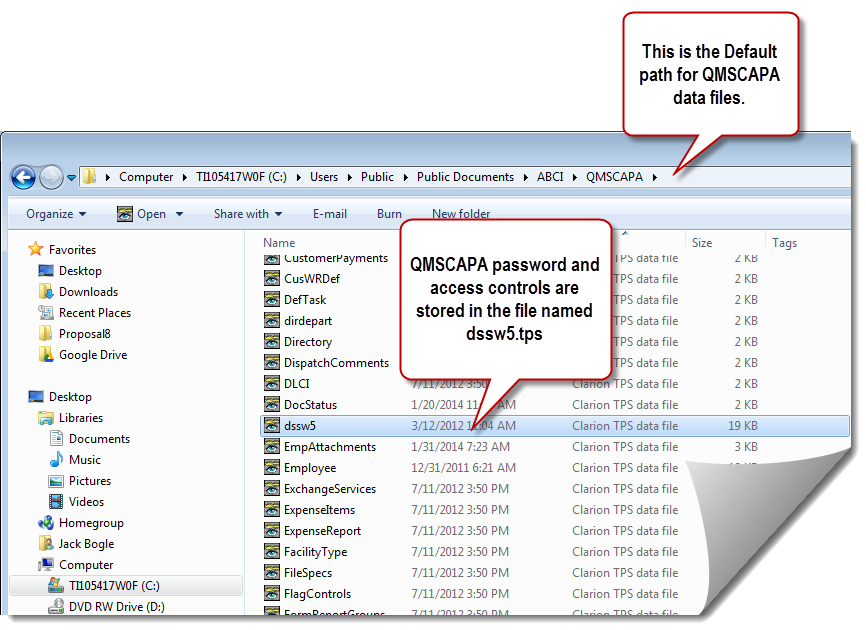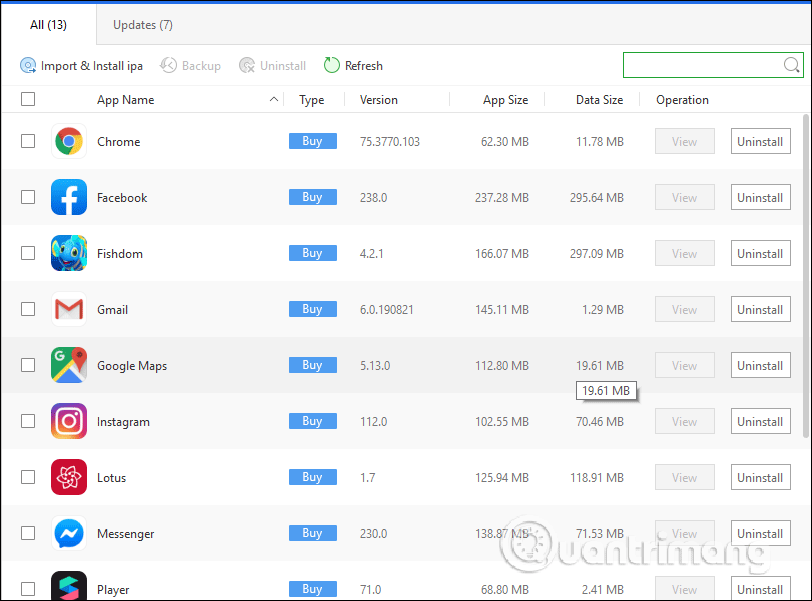- Default Data Location For 3u Tools Windows 10
- Default Data Location For 3u Tools Software
- Default Data Location For 3u Tools Download

Default Data Location For 3u Tools Antares Auto Tune Pro Reddit Expose Vst Crack Anti Auto Caller Tunes Dev-c C99 Dev C++ Program Not Running Vst Download Crack Auto Tune App Song Maker Precision Tune Auto Care College Park Free Fingerprint Vst Download Best Piano Vst Plugins Free Download. 3uTools is a free all-in-one data management and jailbreaking tool for Windows users with Apple devices.The program works as a data manager for backing up and managing documents, multimedia files, and contacts. Its jailbreaking feature allows you to bypass restrictions and unlock additional capabilities. 3uTools download for Windows is designed to work on iPhones. Note the GeoIP2 City Database location. If it is not available on your system, register and download a free version from MaxMind. One more thing is that, this setup is tested on Ubuntu 20.04, with python 3 being the default. Since openvpn-monitor uses python, simply create a symbolic link from python 3 to python; ln -s /usr/bin/python3 /usr/bin.
-->Applies to: SQL Server (all supported versions) - Windows only Azure SQL Managed Instance
An installation of SQL Server consists of one or more separate instances. An instance, whether default or named, has its own set of program and data files, as well as a set of common files shared between all instances of SQL Server on the computer.
3uTools – free device for managing, backing up, jailbreaking, for iPhone / iPad – has launched version v2.36, bringing many new features for the software program, inclusive of capabilities “translation switch device area to your preferred area “and pass cumbersome installation steps. Purpose Built Scalable Compute for Structured and Unstructured Data Analytics. 3U 8-Port Backplane Supports 8 x 3.5' SAS3/SATA3 HDD/SSD with 2x mini SAS HD.
For an instance of SQL Server that includes the Database Engine, Analysis Services, and Reporting Services, each component has a full set of data and executable files, and common files shared by all components.
To isolate install locations for each component, unique instance IDs are generated for each component within a given instance of SQL Server.
Important
Program files and data files cannot be installed on a removable disk drive, cannot be installed on a file system that uses compression, cannot be installed to a directory where system files are located, and cannot be installed on shared drives on a failover cluster instance.
You might need to configure scanning software, such as antivirus and antispyware applications, to exclude SQL Server folders and file types. Review this support article for more information: Antivirus software on computers running SQL Server.
System databases (master, model, MSDB, and tempdb), and Database Engine user databases can be installed with Server Message Block (SMB) file server as a storage option. This applies to both SQL Server stand-alone and SQL Server failover cluster installations (FCI). For more information, see Install SQL Server with SMB Fileshare as a Storage Option.
Do not delete any of the following directories or their contents: Binn, Data, Ftdata, HTML, or 1033. You can delete other directories, if necessary; however, you might not be able to retrieve any lost functionality or data without uninstalling and then reinstalling SQL Server. Do not delete or modify any of the .htm files in the HTML directory. They are required for SQL Server tools to function properly.

Shared Files for All Instances of SQL Server
Common files used by all instances on a single computer are installed in the folder <drive>:Program FilesMicrosoft SQL Servernnn. <drive> is the drive letter where components are installed. The default is usually drive C. nnn identifies the version. The following table identifies versions for the paths. {nn} is the version value used in the instance ID, and registry path.
| Version | *nnn* | {nn} |
|---|---|---|
| SQL Server 2019 (15.x) | 150 | 15 |
| SQL Server 2017 (14.x) | 140 | 14 |
| SQL Server 2016 (13.x) | 130 | 13 |
| SQL Server 2014 (12.x) | 120 | 12 |
| SQL Server 2012 (11.x) | 110 | 11 |
File Locations and Registry Mapping
During SQL Server Setup, an instance ID is generated for each server component. The server components in this SQL Server release are the Database Engine, Analysis Services, and Reporting Services.
The default instance ID is constructed by using the following format:
MSSQL for the Database Engine, followed by the major version number, followed by an underscore and the minor version when applicable, and a period, followed by the instance name.
MSAS for Analysis Services, followed by the major version number, followed by an underscore and the minor version when applicable, and a period, followed by the instance name.
MSRS for Reporting Services, followed by the major version number, followed by an underscore and the minor version when applicable, and a period, followed by the instance name.
Examples of default instance IDs in this release of SQL Server are as follows:
MSSQL{nn}.MSSQLSERVER for a default instance of SQL Server.
MSAS{nn}.MSSQLSERVER for a default instance of SQL Server Analysis Services.
MSSQL{nn}.MyInstance for a named instance of SQL Server named 'MyInstance.'
The directory structure for a SQL Server named instance that includes the Database Engine and Analysis Services, named 'MyInstance', and installed to the default directories would be as follows:
C:Program FilesMicrosoft SQL ServerMSSQL{nn}.MyInstance
C:Program FilesMicrosoft SQL ServerMSAS{nn}.MyInstance
You can specify any value for the instance ID, but avoid special characters and reserved keywords.
You can specify a non-default instance ID during SQL Server Setup. Instead of {Program Files}MicrosoftSQL Server, a <custom path>MicrosoftSQL Server is used if the user chooses to change the default installation directory. Note that instance IDs that begin with an underscore (_) or that contain the number sign (#) or the dollar sign ($) are not supported.
Note
Integration Services and client components are not instance aware and, therefore are not assigned an instance ID. By default, non-instance-aware components are installed to a single directory: <drive>:Program FilesMicrosoft SQL Servernnn. Changing the installation path for one shared component also changes it for the other shared components. Subsequent installations install non-instance-aware components to the same directory as the original installation.
SQL Server Analysis Services is the only SQL Server component that supports instance renaming after installation. If an instance of Analysis Services is renamed, the instance ID will not change. After instance renaming is complete, directories and registry keys will continue to use the instance ID created during installation.
The registry hive is created under HKLMSoftwareMicrosoftMicrosoftSQL Server<Instance_ID> for instance-aware components. For example,

HKLMSoftwareMicrosoftMicrosoftSQL ServerMSSQL{nn}.MyInstance
HKLMSoftwareMicrosoftMicrosoftSQL ServerMSAS{nn}.MyInstance
HKLMSoftwareMicrosoftMicrosoftSQL ServerMSRS{nn}.MyInstance

The registry also maintains a mapping of instance ID to instance name. Instance ID to instance name mapping is maintained as follows:
[HKEY_LOCAL_MACHINESoftwareMicrosoftMicrosoftSQL ServerInstance NamesSQL] '<InstanceName>'='MSSQL{nn}'
[HKEY_LOCAL_MACHINESoftwareMicrosoftMicrosoftSQL ServerInstance NamesOLAP] '<InstanceName>'='MSAS{nn}'
[HKEY_LOCAL_MACHINESoftwareMicrosoftMicrosoftSQL ServerInstance NamesRS] '<InstanceName>'='MSRS{nn}'
Specifying File Paths
During Setup, you can change the installation path for the following features:
The installation path is displayed in Setup only for features with a user-configurable destination folder:
| Component | Default path | Configurable or Fixed Path |
|---|---|---|
| Database Engine server components | Program FilesMicrosoftSQL ServerMSSQL{nn}.<InstanceID> | Configurable |
| Database Engine data files | Program FilesMicrosoftSQL ServerMSSQL{nn}.<InstanceID> | Configurable |
| Analysis Services server | Program FilesMicrosoftSQL ServerMSAS{nn}.<InstanceID> | Configurable |
| Analysis Services data files | Program FilesMicrosoftSQL ServerMSAS{nn}.<InstanceID> | Configurable |
| Reporting Services report server | Program FilesMicrosoftSQL ServerMSRS{nn}.<InstanceID>Reporting ServicesReportServerBin | Configurable |
| Reporting Services report manager | Program FilesMicrosoftSQL ServerMSRS{nn}.<InstanceID>Reporting ServicesReportManager | Fixed path |
| Integration Services | <Install Directory>nnnDTS 1 | Configurable |
| Client Components (except bcp.exe and sqlcmd.exe) | <Install Directory>nnnTools 1 | Configurable |
| Client Components (bcp.exe and sqlcmd.exe) | <Install Directory>Client SDKODBCnnnToolsBinn | Fixed path |
| Replication and server-side COM objects | <drive>:Program FilesMicrosoft SQL ServernnnCOM 2 | Fixed path |
| Integration Services component DLLs for the Data Transformation Run-time engine, the Data Transformation Pipeline engine, and the dtexec command prompt utility | <drive>:Program FilesMicrosoft SQL ServernnnDTSBinn | Fixed path |
| DLLs that provide managed connection support for Integration Services | <drive>:Program FilesMicrosoft SQL ServernnnDTSConnections | Fixed path |
| DLLs for each type of enumerator that Integration Services supports | <drive>:Program FilesMicrosoft SQL ServernnnDTSForEachEnumerators | Fixed path |
| SQL Server Browser Service, WMI providers | <drive>:Program FilesMicrosoft SQL ServernnnShared | Fixed path |
| Components that are shared between all instances of SQL Server | <drive>:Program FilesMicrosoft SQL ServernnnShared | Fixed path |
Warning
Ensure that the Program FilesMicrosoftSQL Server folder is protected with limited permissions.
Note that the default drive for file locations is systemdrive, normally drive C. Installation paths for child features are determined by the installation path of the parent feature.
1 A single installation path is shared between Integration Services and client components. Changing the installation path for one component also changes it for other components. Subsequent installations install components to the same location as the original installation.
2 This directory is used by all instances of SQL Server on a computer. If you apply an update to any of the instances on the computer, any changes to files in this folder will affect all instances on the computer. When you add features to an existing installation, you cannot change the location of a previously installed feature, nor can you specify the location for a new feature. You must either install additional features to the directories already established by Setup, or uninstall and reinstall the product.
Note
For clustered configurations, you must select a local drive that is available on every node of the cluster.
When you specify an installation path during Setup for the server components or data files, the Setup program uses the instance ID in addition to the specified location for program and data files. Setup does not use the instance ID for tools and other shared files. Setup also does not use any instance ID for the Analysis Services program and data files, although it does use the instance ID for the Analysis Services repository.
If you set an installation path for the Database Engine feature, SQL Server Setup uses that path as the root directory for all instance-specific folders for that installation, including SQL Data Files. In this case, if you set the root to 'C:Program FilesMicrosoftSQL ServerMSSQL{nn}.<InstanceName>MSSQL', instance-specific directories are added to the end of that path.
Customers who choose to use the USESYSDB upgrade functionality in the SQL Server Installation Wizard (Setup UI mode) can easily lead themselves into a situation where the product gets installed into a recursive folder structure. For example, <SQLProgramFiles>MSSQL14MSSQLMSSQL10_50MSSQLData. Instead, to use the USESYSDB feature, set an installation path for the SQL Data Files feature instead of the Database Engine feature.
Note
Default Data Location For 3u Tools Windows 10
Data files are always expected to be found in a child directory named Data. For example, specify C:Program FilesMicrosoftSQL ServerMSSQL{nn}.<InstanceName> to specify the root path to the data directory of the system databases during upgrade when data files are found under C:Program FilesMicrosoftSQL ServerMSSQL{nn}.<InstanceName>MSSQLData.
Default Data Location For 3u Tools Software
See Also
Default Data Location For 3u Tools Download
Database Engine Configuration - Data Directories
Analysis Services Configuration - Data Directories